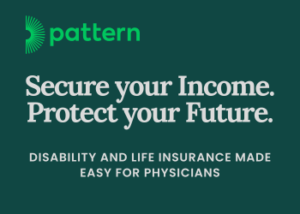“Here you go, doctor.”
My patient with incredibly well-controlled type 2 diabetes hands me his fingerstick log at his regularly scheduled office visit. Despite his multiple medical problems (congestive heart failure, coronary artery disease, chronic renal insufficiency, and gout, among others) his sugars have been incredibly well-controlled over the past several years.
Page after page of scrawled numbers, tiny smears of his blood on the pages, his fingersticks range from 90 to 140, never much higher, never much lower. Day after day, week after week, month after month, most days four times a day, fasting and after each meal, and occasionally some evening readings as well.
His hemoglobin A1c has never drifted much above 7.0, and despite my recommendations, he does not want to check any less. I’ve asked him why he needs to check so much, and for him there’s a certain comfort in knowing. He initially presented to the MICU in HONK with a sugar of 939.
I worry he’s going to get anemic from all this testing (I know it’s only a few tiny drops of blood, but I’m trying to make a point here).
When is too much data a bad thing?
As we move along in the 21st-century, in this wired generation, the landscape of healthcare information and technology is changing. Not only have we seen the transitioning of doctors from paper charts to electronic medical records (EMRs), but it is also enabling us to acquire and deal with infinitely more data about our patients.
In the patient-centered medical home, open lines of communication and efforts to empower our patients and bring them back to the center of care will no doubt lead to more efforts by patients at self-monitoring and sending us the results.
On the simplest side, my patients can send me their home blood pressure readings and fingerstick readings through widgets on my EMR that allow them to manually input data to send to me.
As we move up in complexity, we have meters that will automatically sync to the patient’s EMR when patients check their weight, blood pressure, or glucose readings at home.
Wearable technology is starting to disseminate to collect pulse rate, EKG, EEG, sleep, steps, calories burned, and more; the possibilities are nearly endless.
And the potential for even more and closer monitoring with a greater level of detail exists, as patients start wearing these monitors and sending data to us and expecting us to do something about it. Taken to the extreme we will likely have patients embedding sensors within their bodies, and have tiny nanotechnology sensors floating in their bloodstream continuously monitoring every measurable aspect of their health.
But the question remains, what do we do with all of this data?
A fingerstick today can tell me whether the symptoms my patient is feeling are from high or low sugars, helps me fine-tune a dose of insulin, helps patients learn how their diet directly impacts their sugar, or helps spot issues with compliance. An HbA1c reading will help me make global changes in their regimen, since it gives the snapshot over time. And even intermediate glycosylated protein markers can be useful in fine-tuning changes over a short interim period.
But every data point?
The deadpan comedian Steven Wright once said, “You can’t have everything — where would you put it?” And a friend of mine once said to me, “If you videotape more than half of your life, you won’t have time to watch it.”
As this fascination with collecting more and more medical data from each individual human we care for goes to further extremes, we may be soon receiving a continuous data dump of massive amounts of biophysiological data on our patients’ every move and the fluctuating levels and markers of each and every one of their health conditions. Unless we carefully think about what we’re going to do with this data, it ends up being excessive and might not be very useful for the patient’s health.
Care coordinators and other members of the team may be used to review data and help spot concerning trends or dangerous levels. One can foresee a future with large workstations with monitors showing endless streams of data on our patients and automatic thresholds triggering an alarm. Giving patients timely feedback and other useful interventions and resources could help patients interpret what is going on and better manage their overall health.
But we need to make sure we don’t miss the forest for the trees. And the branches, roots, bark, and leaves.
Fred N. Pelzman is an associate professor of medicine, New York Presbyterian Hospital and associate director, Weill Cornell Internal Medicine Associates, New York City, NY. He blogs at Building the Patient-Centered Medical Home.



















![Rethinking patient payments: Why billing is the new frontline of patient care [PODCAST]](https://kevinmd.com/wp-content/uploads/Design-3-190x100.jpg)





![Alzheimer’s and the family: Opening the conversation with children [PODCAST]](https://kevinmd.com/wp-content/uploads/Design-4-190x100.jpg)



![Why great patient outcomes don’t protect female doctors from burnout [PODCAST]](https://kevinmd.com/wp-content/uploads/Design-1-190x100.jpg)
